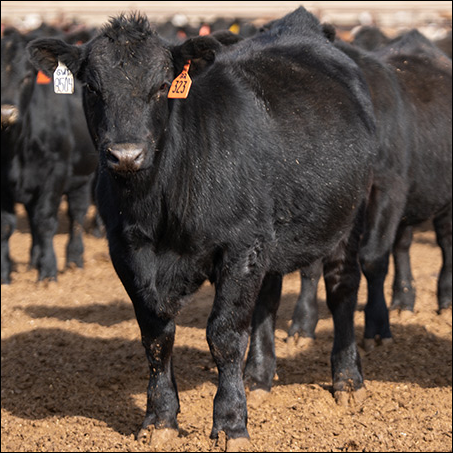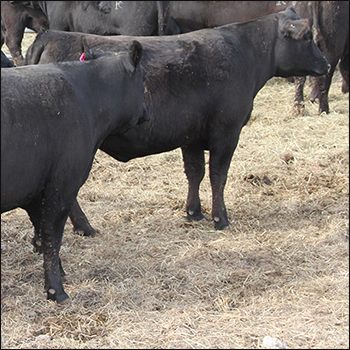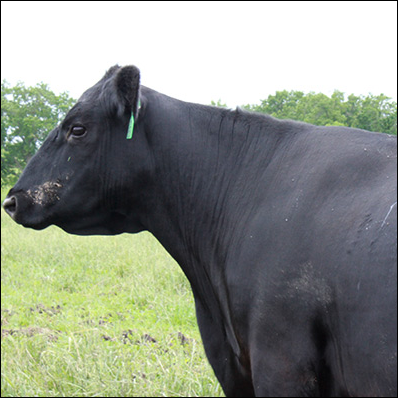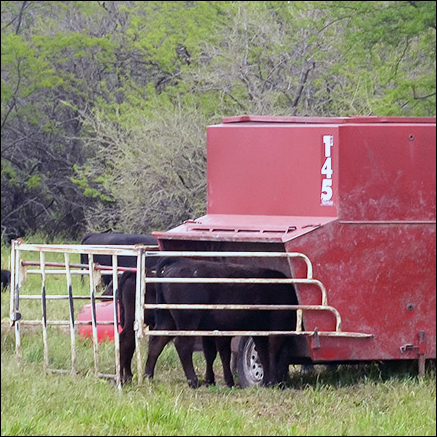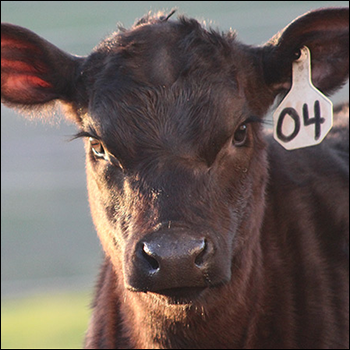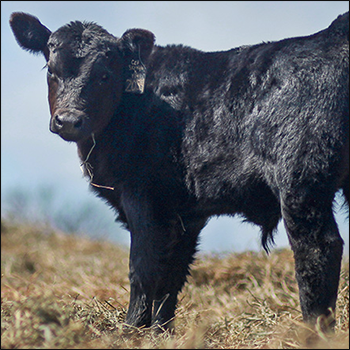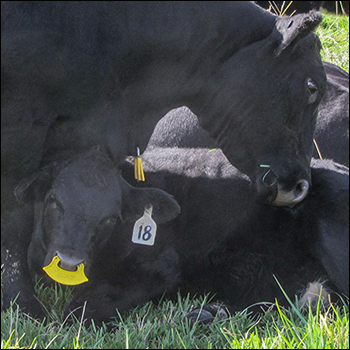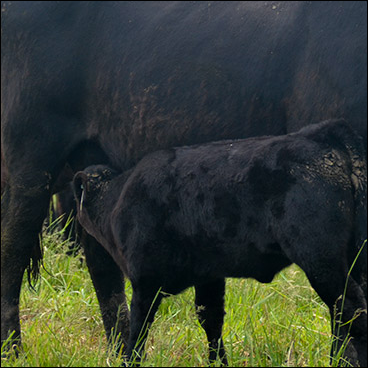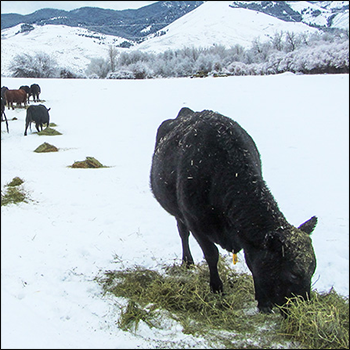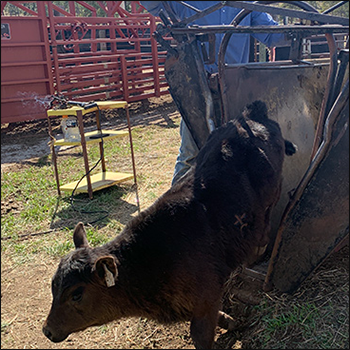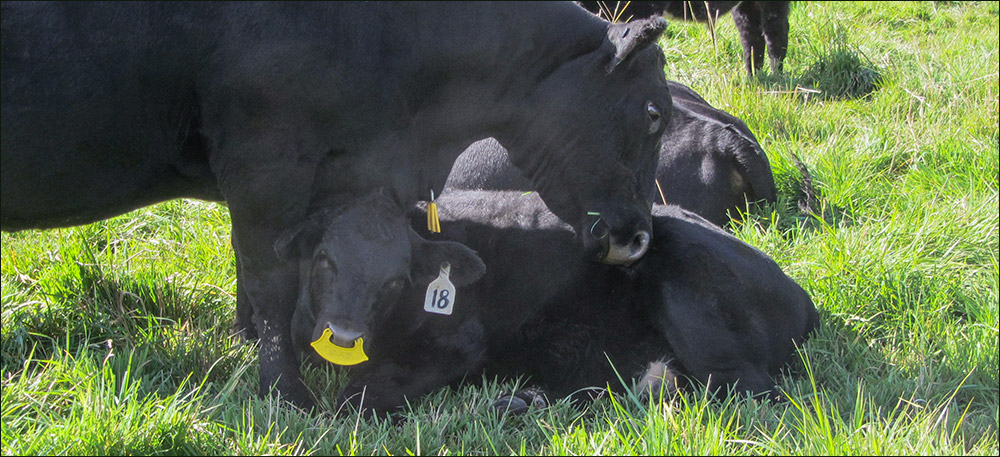
Easy Weaning with Nose Flaps
Simple, two-step method ensures stress-free weaning.
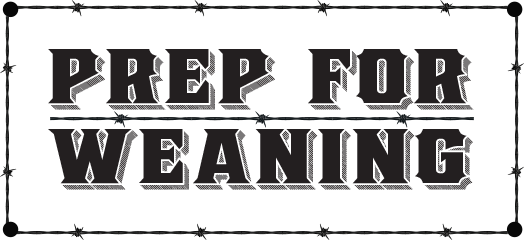
Weaning can be stressful. On our ranch, we started fenceline weaning 35 years ago — separating cows from calves, but in adjacent pens or pastures so they could still get next to each other. It was a little easier on them than the “cold turkey” weaning we did earlier, weaning calves into a corral and taking their mothers to a far pasture. However, they still bawled a lot and were upset.
Eight years ago we tried something different — using “nose flaps” on the calves and leaving pairs together until cows started drying up. We’d heard good reports from ranchers using this method. I talked to Joe Stookey, who invented this innovative device at the Western College of Veterinary Medicine at the University of Saskatchewan about 18 years ago.
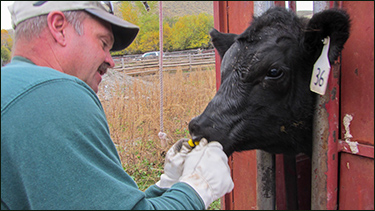 |
The small plastic flaps can be easily installed in seconds, with calves restrained in a chute. Then the calves are returned to their mothers. The flap hangs down over nose and mouth, preventing the calf from getting a teat into its mouth to nurse, but does not hinder eating grass or hay or drinking water. |
Calves are stressed when separated from mom. Stress can lead to immune suppression and vulnerability to disease, especially if weaning stress is coupled with vaccinations, bad weather and/or long transport when newly weaned calves are sold. It pays to reduce stress on calves.
In nature, without human intervention, calves are weaned when the cows kick them off before the next calf is born. The big calf follows along and stays with mom, never losing the comfort and security of her presence. It may still try to nurse for a few days, but the cow won’t let it, and it resigns itself to weaned status.
When I talked to Stookey about nose flaps, he said it was an experiment because of a student’s question. “One of our students asked: ‘What does the calf miss most — the milk or the mother?’ We decided to find out. When we did a study and took away the milk by creating this anti-sucking device, none of the calves were upset,” Stookey said.
“Then, when we took away the mother a few days later, they didn’t miss her either, and we realized we’d already weaned the calves! We weaned them in the presence of the mother and that was the big difference. It was an amazing revelation about the weaning process,” he told me.
The small plastic flaps can be easily installed in seconds, with calves restrained in a chute. Then the calves are returned to their mothers. The flap hangs down over nose and mouth, preventing the calf from getting a teat into its mouth to nurse, but does not hinder eating grass or hay or drinking water.
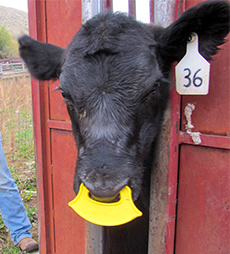 |
The calf cannot nurse, but it’s not emotionally upset because it’s still with mom. It feels secure with her companionship and protection during the weaning process. |
The calf cannot nurse, but it’s not emotionally upset because it’s still with mom. It feels secure with her companionship and protection during the weaning process. The cow starts to dry up, and the calf adjusts to not having milk. About five to seven days later, cows and calves can be completely separated, and the flaps can be removed from the calves.
We ordered nose flaps for our calves and installed them a week before preg-checking. It was humorous to watch the calves; they’d run to mom and try to nurse, then stand there and bunt the udder in frustration — and get kicked. Mom couldn’t figure out why baby wasn’t nursing, but neither were stressed. They kept track of each other and spent time together, but there was no desperation, no frantic pacing or bawling.
By the time we took out the nose flaps a week later, when we worked calves through the chute again for vaccinations (and the cows for preg-check and vaccinations), the cows were drying up and the calves essentially weaned. We put the calves in a new pasture and took the cows away to spend the rest of the fall on mountain pasture. Everybody was happy. It was easier on everyone!
We’ve now used the same nose flaps for eight years — washing them and storing them till the next fall. Sometimes we put them in at preg-check time (and do all the calf vaccinations at that time) and take the flaps out a week later. It doesn’t seem to matter. We’ve never had any sickness in any of the calves weaning them this way, and with no stress at the time of vaccination, they mount good immune response.
Some years, one or two calves lost their flaps by catching them on a fence or feeder and unweaned themselves, but we always found the missing flaps. Occasionally a really smart calf with dexterous tongue figures out how to still get a teat in his mouth, but this is rare. Putting calves through the chute twice to put in flaps and take them out takes a little extra time, but it is well worth it, and now we’ll never wean calves any other way.
Editor’s note: Heather Smith Thomas is a freelance writer and cattlewoman from Salmon, Idaho.

